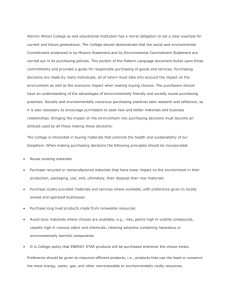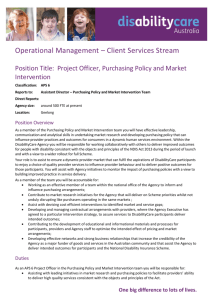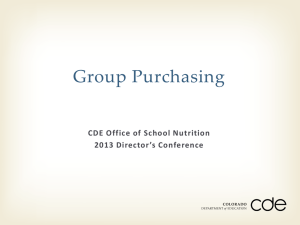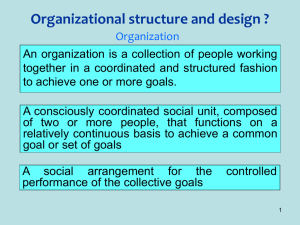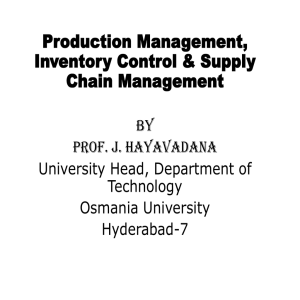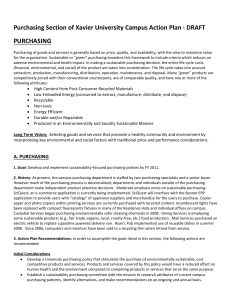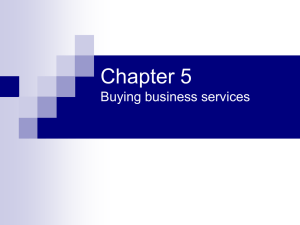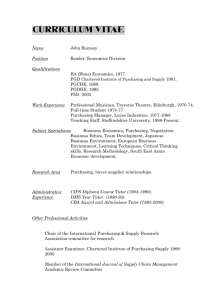Strategic Memo 2 - Northeast Institute for Quality Community Action
advertisement
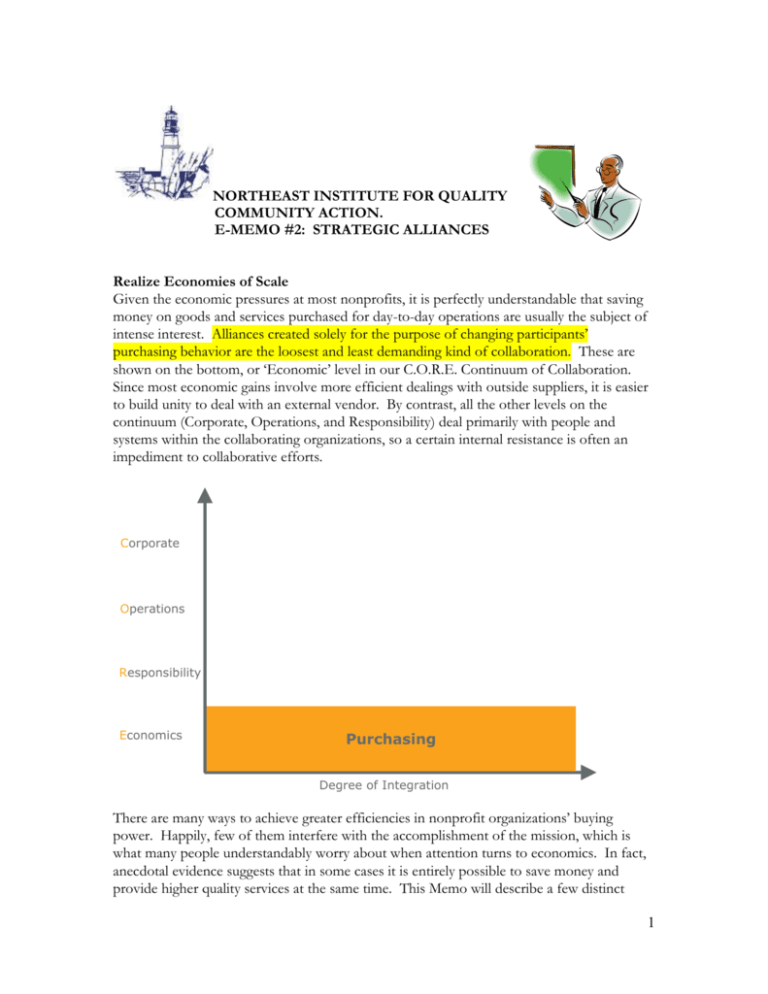
NORTHEAST INSTITUTE FOR QUALITY COMMUNITY ACTION. E-MEMO #2: STRATEGIC ALLIANCES Realize Economies of Scale Given the economic pressures at most nonprofits, it is perfectly understandable that saving money on goods and services purchased for day-to-day operations are usually the subject of intense interest. Alliances created solely for the purpose of changing participants’ purchasing behavior are the loosest and least demanding kind of collaboration. These are shown on the bottom, or ‘Economic’ level in our C.O.R.E. Continuum of Collaboration. Since most economic gains involve more efficient dealings with outside suppliers, it is easier to build unity to deal with an external vendor. By contrast, all the other levels on the continuum (Corporate, Operations, and Responsibility) deal primarily with people and systems within the collaborating organizations, so a certain internal resistance is often an impediment to collaborative efforts. Corporate Operations Responsibility Economics Purchasing Degree of Integration There are many ways to achieve greater efficiencies in nonprofit organizations’ buying power. Happily, few of them interfere with the accomplishment of the mission, which is what many people understandably worry about when attention turns to economics. In fact, anecdotal evidence suggests that in some cases it is entirely possible to save money and provide higher quality services at the same time. This Memo will describe a few distinct 1 strategies for deriving economic gains from working with other nonprofits on purchasing. Supply purchasing is used to highlight collaboration strategies appropriate to this level of integration but other types of purchasing or leasing (e.g., vehicles, equipment, etc.) while more complicated may also share these approaches. Sharing Information One of the quickest, least expensive and intrusive ways of realizing economic savings is sharing information. Although information can be shared about any number of economic areas in a nonprofit for the purposes of this memo the area of supplies purchasing practices will be discussed. This example is being used largely because vendor-provided supply related services are easier to quantify and familiar to most people. There are many different levels of sharing economic information. The easiest is to compare recent information and experiences with different vendors of the same sort of product or service. A deeper approach would be to share copies of contracts and purchasing agreements along with accounting records. A yet more sophisticated technique would be to select one or more comparable items and track their price history side by side over a period of months. The advantage to information sharing as an economic strategy is that it is quick, easy and inexpensive. The limitations flow from the same facts. There are no guarantees that any participant in the process will gain from the effort, since it is left to them as individual purchasers to act on the information they gained. Second, there is often no structured means of following up on any gains, so suppliers could eventually revert back to their old pricing structures without notice. Finally, any gains are elusive and hard to document. Opportunities for building momentum for collaboration and proving success can quietly slip away. Joint Bidding. Bidding jointly is a step up from the simple sharing of information. In this approach the participants go through a purchasing process together. They might design and issue a joint Request for Proposal (RFP), research the responses together, and interview bidders jointly. In the end, however, they negotiate separate deals. This method has the advantage of reducing overhead slightly by sharing the costs of purchasing, and it may also encourage suppliers to be a bit more aggressive in their pricing, but there are no guarantees. Again, the risk is that unmonitored and independently structured arrangements can easily fall apart. 2 Pitfall: The Potato Chip Bag Trap Purchasing analyses aren’t as easy as they sound. Sloppy analyses will lead to bad conclusions and may even result in spending more time and money. The key is to arrive at the same unit of measure for each item being compared and then to rigorously extract the price per unit from the inevitable jumble of vendor-related records. Vendors don’t want you to do this sort of thing so they try to make it difficult. Ever notice the measurements on snack size bags of potato chips, pretzels and other junk foods? Vendors need to sell their bags at the same price as the competitions so their serving size varies wildly. Making comparisons between them is tedious and time-consuming, which is precisely what the higher-priced manufacturers want. Joint Purchasing Joint purchasing is a favored strategy of alliances of all kinds, and for good reason. It can take many forms. In some cases the alliance -- frequently an association -- simply researches and endorses a particular vendor. In this case the association is effectively turned into one of the vendor’s sales representatives. Vendors gain when the association’s endorsement drives more business to them, the members (presumably) gain from lower prices, and the association gains by building stronger member relationships and perhaps a commission of some sort. In other cases, the alliance may create a business entity expressly to carry out purchasing activities. Most joint purchasing initiatives operate on the same principle: create savings for members and/or make money for the alliance by cutting out the last distribution point for the end user. Office supply superstores created a whole industry by doing the same thing. Office supplies used to be distributed to the consumer largely through small ‘mom and pop’ stationery stores, who were in turn supplied by larger wholesalers. Office supply superstores effectively turn the wholesaler into the last stop for the consumer, thereby cutting out those smaller and less efficient retailers. The more the alliance can act like a wholesaler, the higher the savings it will produce for its members. For example, if an alliance can buy large quantities of some commodity such as paper it can offer substantial savings for members in addition to some profit for itself. But this strategy requires an investment in appropriate storage capacity, a distribution system, security provisions, and so forth; in short, it requires the alliance to act like a true wholesaler. That’s a responsibility only the very largest and most sophisticated alliances are likely to take on, so most efforts will probably stop considerably short of this level. 3 Tip: Respect the Economics of Purchasing Different products and services respond differently when purchased in quantity. Commodity products such as paper or computers behave predictably when purchased in bulk; the more you purchase, the lower the unit price is likely to be. Other things such as insurance are so complex and individually tailored that they defeat efforts to rationalize and bulk purchase them; in these cases the primary advantage of joint purchasing is likely to be access to the product or perhaps a higher quality product (for having been designed expressly for the purchasing group). 4



